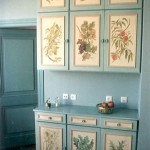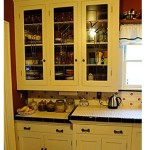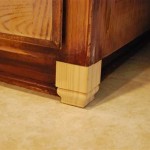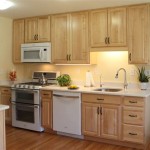How to Glaze Oak Kitchen Cabinets: A Comprehensive Guide to Transform Your Space
Oak kitchen cabinets are known for their durability and timeless appeal, but over time, they can start to look outdated or worn. Glazing is a technique that can give your oak cabinets a fresh, updated look while adding depth and character. Here's a comprehensive guide to help you successfully glaze oak kitchen cabinets.
Materials You'll Need:
- Glazing liquid or medium
- Glaze color
- Paint brushes (a variety of sizes)
- Clean, lint-free cloths
- Sandpaper (optional)
- Clear polyurethane finish
Step 1: Prepare the Cabinets
Start by cleaning the cabinets thoroughly with a degreaser to remove dirt or grease. If there are any imperfections or splinters, sand them lightly with fine-grit sandpaper to create a smooth surface. Wipe down the cabinets with a tack cloth to remove any dust.
Step 2: Choose and Mix the Glaze
Select a glazing liquid or medium designed for use with your chosen glaze color. Carefully follow the manufacturer's instructions for mixing the glaze. The consistency should be similar to thick cream.
Step 3: Apply the Glaze
Use a clean paintbrush to apply the glaze in thin, even coats. Work in small sections, starting from the edges and gradually moving towards the center. Apply the glaze in the direction of the wood grain for a more natural look.
Step 4: Remove Excess Glaze
After applying the glaze, use a clean, dry cloth to gently wipe away any excess from the surface of the cabinets. This will help create a smooth, even finish.
Step 5: Allow to Dry
Let the glaze dry completely according to the manufacturer's instructions. This can take several hours or even overnight.
Step 6: Seal the Glaze
Once the glaze is dry, apply a clear polyurethane finish to protect it and give the cabinets a durable finish. Use a brush or a sprayer for even coverage. Let the finish dry completely.
Tips for Glazing Oak Cabinets:
- Experiment with different glaze colors to find the perfect shade for your cabinets.
- Use a variety of brush sizes to create different effects. Smaller brushes for details, larger brushes for larger areas.
- Practice on a scrap piece of wood first to get a feel for the glazing process.
- Allow ample time for drying between coats and before applying the clear finish.
- If you want a more distressed look, sand the edges of the cabinets after applying the glaze.
- Regularly clean and maintain the glazed cabinets using a mild detergent and water to preserve their beauty.
Glazing oak kitchen cabinets is a rewarding project that can transform the look of your kitchen. By following these steps and tips, you can create beautiful, glazed cabinets that will add depth, character, and style to your home.

How To Glaze Cabinets With Gel Stain Adventures Of A Diy Mom

How To Glaze Cabinets With Gel Stain Adventures Of A Diy Mom

Glazed Cabinets Honey Oak Painting Kitchen

How To Glaze Cabinets At Home With The Barkers

How To Glaze Cabinets With Gel Stain Adventures Of A Diy Mom

3 Steps To Glaze Cabinets Correctly Painted Furniture Ideas Distressed Kitchen Glazed Chalk Paint

How To Glaze Cabinets At Home With The Barkers

How To Glaze Cabinets At Home With The Barkers

How To Glaze Kitchen Cabinets Diyer S Guide Bob Vila

Rescuing And Reviving A Glazed Distressed Kitchen Bella Tucker
Related Posts








